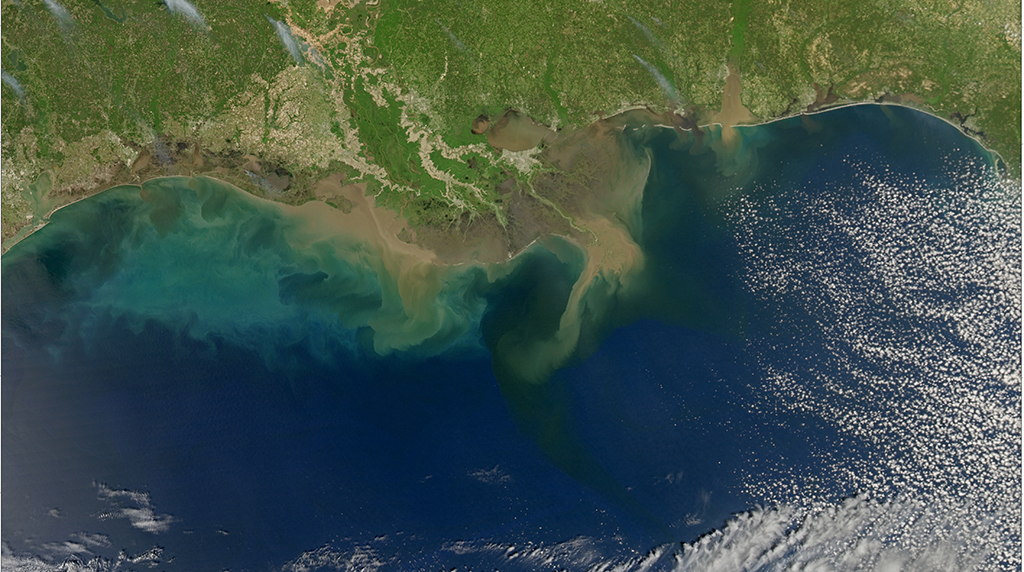April 26, 2016
In a recent paper published in Deep Sea Research II, ECOGIG researchers from Georgia Tech and Lamont-Doherty Earth Observatory found that nutrient concentrations in the Northern Gulf of Mexico are highly variable. The distribution of surface nutrients along a salinity gradient (Mississippi-Atchafalaya River outflow to Gulf of Mexico) was measured in the northern Gulf during the summer of 2010 and 2011, and in late spring of 2012. The new, extensive data set covers the salinity gradient from 11 to 37 psu (practical salinity unit) in a year of extraordinarily high river discharge (2011), a year of average river discharge (2010) and a year of below average (2012) river discharge.
The overall surface concentrations of nitrate+nitrite, phosphate and silicate were compared to those recorded in cruises spanning the 1985 – 2009 interval. ECOGIG researchers found that surface phosphate and nitrate+nitrite concentrations are approximately three- and two-fold smaller in the 2010–2012 period compared to the previous years. There is, in general, a negative correlation between nutrient concentrations and salinity at the ocean surface- this was confirmed in the most recent data for the Northern Gulf. The area surrounding the Mississippi River mouth is characterized by inorganic N:P ratios greater than 30:1 that decrease to values typically less than 10:1 at about 100 km from of the mouth. With respect to river discharge, they found that the distribution of these surface nutrients is highly variable and cannot be described with a linear model based on the Mississippi River's discharge alone.
The full text of this paper "Highly variable nutrient concentrations in the Northern Gulf of Mexico" is available here.


















 back to top
back to top